
Nikko: A Timeless Wonderland of Nature and Culture
Discover Nikko, Japan's gem of natural wonders and historic splendor, where majestic temples meet serene landscapes and cultural experiences await around every corner.
Nestled in the mountains of Tochigi Prefecture, Nikko is a mesmerizing blend of natural beauty and rich cultural heritage. This UNESCO World Heritage site is renowned for its stunning temples and shrines, including the famous Toshogu Shrine, dedicated to Tokugawa Ieyasu, the founder of the Tokugawa shogunate. The intricate carvings, vibrant colors, and historical significance of these sites make them a must-see for any traveler. Beyond its historical landmarks, Nikko offers a breathtaking natural landscape. The area is home to beautiful waterfalls like Kegon Falls, serene lakes such as Lake Chuzenji, and vast forests that turn into a kaleidoscope of colors during the autumn season. Whether you're hiking through the lush trails of Nikko National Park or soaking in the hot springs of the nearby Kinugawa Onsen, the natural splendor of Nikko is sure to captivate your senses. Nikko is not just about sightseeing; it's also about experiencing the unique culture and traditions of Japan. The town hosts a variety of festivals throughout the year, including the grand Shunki Reitaisai (Spring Grand Festival) and the vibrant Nikko Yumoto Onsen Snow Festival. Local delicacies, such as Yuba (tofu skin) and Nikko sake, offer a taste of the region's culinary heritage. With its harmonious blend of history, nature, and culture, Nikko promises an unforgettable journey for every traveler.
Local tips in Nikko
- Visit Toshogu Shrine early in the morning to avoid crowds and enjoy a peaceful experience.
- Autumn is the best time to visit for stunning fall foliage, but be prepared for cooler temperatures.
- Take the Akechidaira Ropeway for panoramic views of the Kegon Falls and Lake Chuzenji.
- Try the local specialty, Yuba, at one of the many restaurants in the area.
- Pack comfortable walking shoes for exploring the many trails and historical sites.
Nikko: A Timeless Wonderland of Nature and Culture
Nestled in the mountains of Tochigi Prefecture, Nikko is a mesmerizing blend of natural beauty and rich cultural heritage. This UNESCO World Heritage site is renowned for its stunning temples and shrines, including the famous Toshogu Shrine, dedicated to Tokugawa Ieyasu, the founder of the Tokugawa shogunate. The intricate carvings, vibrant colors, and historical significance of these sites make them a must-see for any traveler. Beyond its historical landmarks, Nikko offers a breathtaking natural landscape. The area is home to beautiful waterfalls like Kegon Falls, serene lakes such as Lake Chuzenji, and vast forests that turn into a kaleidoscope of colors during the autumn season. Whether you're hiking through the lush trails of Nikko National Park or soaking in the hot springs of the nearby Kinugawa Onsen, the natural splendor of Nikko is sure to captivate your senses. Nikko is not just about sightseeing; it's also about experiencing the unique culture and traditions of Japan. The town hosts a variety of festivals throughout the year, including the grand Shunki Reitaisai (Spring Grand Festival) and the vibrant Nikko Yumoto Onsen Snow Festival. Local delicacies, such as Yuba (tofu skin) and Nikko sake, offer a taste of the region's culinary heritage. With its harmonious blend of history, nature, and culture, Nikko promises an unforgettable journey for every traveler.
When is the best time to go to Nikko?
Iconic landmarks you can’t miss
Nikkō Tōshogū
Discover the spiritual and architectural wonder of Nikkō Tōshōgū, a UNESCO World Heritage Site and a must-visit Shinto shrine in Japan.

Kegon Waterfall
Explore the breathtaking Kegon Waterfall in Nikko, Tochigi — a stunning natural wonder surrounded by lush landscapes and serene beauty.

Tobu World Square
Explore Tobu World Square in Nikko, a unique theme park featuring over 100 stunning miniature models of world-famous landmarks and cultural sites.

Shinkyō Bridge
Explore the iconic Shinkyō Bridge, a historic landmark in Nikko, Japan, known for its stunning views and rich cultural significance.

Ryuzu Falls
Experience the breathtaking beauty of Ryuzu Falls, a serene natural haven in Nikko, Japan, perfect for hiking and photography enthusiasts.

Edo Wonderland Nikko Edomura
Discover the charm of Japan's Edo period at Edo Wonderland Nikko Edomura, a theme park filled with history, culture, and unforgettable experiences.

Yudaki Falls
Experience the breathtaking beauty of Yudaki Falls in Nikko, Tochigi – a must-visit scenic spot for nature lovers and adventure seekers.

Nikko Futarasan jinja Haiden
Discover the serene beauty and spiritual heritage of Nikko Futarasan Jinja Haiden, one of Japan's oldest Shinto shrines nestled in stunning natural surroundings.

Nikko Kinugawa Hotel Mikazuki
Experience the serenity of Nikko at the luxurious Kinugawa Hotel Mikazuki, a perfect blend of comfort and natural beauty.

日光金谷ホテル
Discover the elegance of Kanaya Hotel, a historic gem in Nikko, where tradition meets luxury in a breathtaking natural setting.

Nikko Tamozawa Imperial Villa Memorial Park
Explore the serene beauty and rich history of Nikko Tamozawa Imperial Villa Memorial Park, a breathtaking historical landmark in Tochigi, Japan.
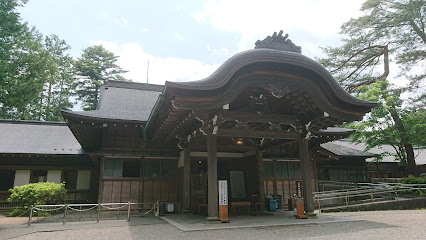
Chūzen-ji Temple
Discover the tranquility of Chūzen-ji Temple in Nikko, a beautiful Buddhist sanctuary surrounded by nature's splendor.

Senjōgahara Grassy Plain.
Discover the breathtaking beauty of Senjōgahara Grassy Plain, a nature preserve with vibrant flora and stunning landscapes in Nikko, Tochigi.

Nikkozan Rin’nōji Temple
Explore the tranquil beauty of Nikkozan Rin'nōji Temple, a UNESCO World Heritage site showcasing Japan's rich Buddhist heritage and stunning architecture.

OSARU Land & Animal Town Nikko Saru Gundan
Discover the enchanting OSARU Land & Animal Town in Nikko, a theme park blending thrilling rides and captivating animal performances for an unforgettable family experience.

Unmissable attractions to see
Ashikaga Flower Park
Discover the enchanting beauty of Ashikaga Flower Park, a floral wonderland in Tochigi, Japan, perfect for nature lovers and photographers alike.

Tobu World Square
Explore the world's wonders in miniature at Tobu World Square, a captivating theme park in Nikko, Tochigi, Japan, featuring iconic landmarks from across the globe.

Edo Wonderland Nikko Edomura
Immerse yourself in Japan’s Edo period at Edo Wonderland Nikko Edomura, a captivating theme park where history comes alive with thrilling performances and interactive experiences.
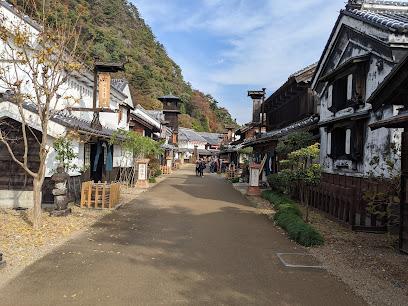
Yudaki Cascades
Explore Yudaki Cascades in Nikko, Tochigi - a stunning natural wonder with hiking trails and breathtaking views for nature lovers and outdoor enthusiasts.

Ashikaga Orihime-jinja Shrine
Immerse yourself in the tranquil beauty and spiritual heritage of Ashikaga Orihime-jinja Shrine, a premier Shinto destination in Tochigi, Japan.

Ashikaga Gakkō (Former Academy)
Explore the rich educational heritage of Ashikaga Gakkō, Japan's oldest academy, surrounded by serene gardens and stunning architecture.

Banna-ji Temple
Explore the serene beauty and spiritual heritage of Banna-ji Temple in Ashikaga, Tochigi—a must-visit for travelers seeking tranquility and cultural depth.

Nikko Daiyagawa Park
Explore the enchanting landscapes and tranquil waters of Nikko Daiyagawa Park, a serene haven in Tochigi Prefecture that captivates visitors year-round.

Ryuokyo Canyon
Explore Ryuokyo Canyon, a breathtaking scenic spot in Nikko, Tochigi, perfect for hiking and immersing in nature's beauty.

Nikko Kirifuri Kogen Kisuge Plains
Explore the breathtaking Nikko Kirifuri Kogen Kisuge Plains, a nature lover's haven featuring stunning landscapes and vibrant wildflowers year-round.

Trick Artopia Nikko
Experience the enchanting fusion of art and illusion at Trick Artopia Nikko, where whimsical 3D artworks come to life, perfect for all ages.

Nikko Kirifuri Kogen Kisuge Plains
Discover the breathtaking beauty and diverse trails of Nikko Kirifuri Kogen Kisuge Plains, a perfect escape for nature lovers and adventure seekers.

Kirifuri Plateau
Explore the stunning Kirifuri Plateau, a hidden gem in Tochigi, offering breathtaking views, hiking trails, and serene nature experiences for every traveler.

Rin’nōji Taiyū-in (Mausoleum of Iemitsu)
Discover the stunning architecture and serene landscapes of Rinnoji Taiyuin, the revered mausoleum of Tokugawa Iemitsu in Nikko, Tochigi.
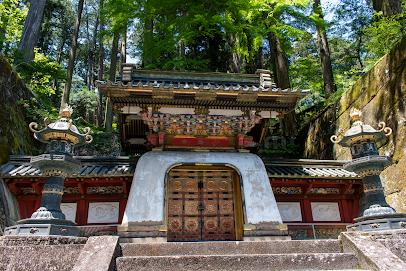
Kirifuri Plateau
Explore the enchanting Kirifuri Plateau, a breathtaking hiking area and nature preserve in Tochigi, perfect for outdoor enthusiasts and nature lovers.

Essential places to dine
Ramen Bonten
Experience authentic Japanese flavors at Ramen Bonten in Nikko - where every bowl tells a story.

ガスト 日光店
Experience family-friendly dining at Gusto Nikko with delicious Japanized Western cuisine in an inviting atmosphere.

Enya
Experience the best of Japanese hospitality and gourmet steak at Enya in Nikko – where tradition meets culinary excellence.

Gyoza no Umechan
Savor authentic Japanese flavors at Gyoza no Umechan in Nikko – where delicious gyoza meets flavorful ramen in a cozy atmosphere.

米吉 晃寿司 komekichi kouzushi
Savor the authentic taste of Japan at Komekichi Kouzushi, where fresh sushi meets traditional craftsmanship in picturesque Nikko.
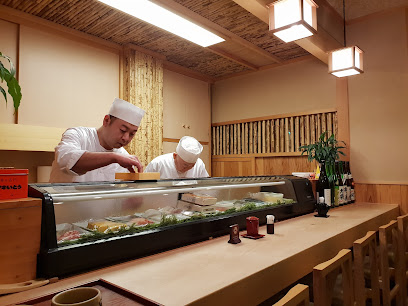
Grill & Steak Myōgetsubō
Experience exquisite Japanese steakhouse dining at Grill & Steak Myōgetsubō, where culinary tradition meets modern creativity in Nikko.

Hippari-Dako
Experience authentic teishoku dining at Hippari-Dako in Nikko, where tradition meets flavor in every dish.

Nikko Maruhide Shokudo
Experience the best of traditional Japanese cuisine at Nikko Maruhide Shokudo with fresh ingredients and local flavors.

SHIORI
Discover Nikko's finest dining at SHIORI - where traditional Japanese flavors meet modern creativity.

Nikko Yubamaki ZEN
Savor the essence of Japanese cuisine at Nikko Yubamaki ZEN - where tradition meets taste in the heart of Tochigi.

Eat Asai
Discover authentic Chinese cuisine and exquisite dim sum at Eat Asai, a culinary gem in Nikko that delights every visitor.

Asaya Resthouse
Experience authentic Japanese cuisine at Asaya Resthouse in Nikko—where local flavors meet serene natural beauty.

Nantai
Discover authentic Kyoto-style dining at Nantai in Nikko – where tradition meets flavor for an unforgettable culinary journey.

Bar de Nikko
Discover Bar de Nikko, where modern izakaya meets café culture in scenic Nikko - indulge in authentic Japanese flavors today.

Yuba ryōri Aburagen
Experience authentic Japanese cuisine at Yuba ryōri Aburagen in Nikko, specializing in delicate yuba dishes crafted from local ingredients.

Markets, malls and hidden boutiques
Nikkō Tōshogū
Discover Nikkō Tōshogū, a UNESCO World Heritage site rich in history, art, and nature, nestled in Japan's stunning Tochigi mountains.

Tobu World Square
Explore iconic global landmarks in miniature at Tobu World Square, the enchanting theme park in Nikko, Tochigi, Japan.

Edo Wonderland Nikko Edomura
Step back in time at Edo Wonderland Nikko Edomura, a unique theme park celebrating Japan's rich Edo period history through immersive experiences and cultural exhibits.

Roadside Station Nikko
Experience the charm and convenience of Roadside Station Nikko, where culture meets comfort in the heart of Tochigi.

イオン今市店
Explore the vibrant Aeon Imaichi Store in Nikko for a unique shopping experience filled with local products and international treasures.
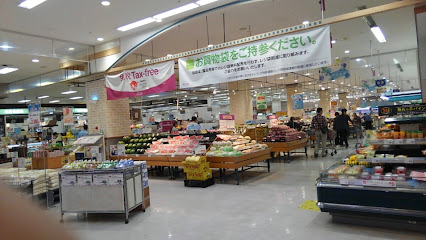
Nikko National Park
Discover the breathtaking landscapes and rich biodiversity of Nikko National Park, a jewel of Tochigi, Japan, perfect for nature lovers and adventurers.

Nikko robatazuke
Explore the flavors of Nikko Robatazuke, where traditional Japanese food manufacturing meets delightful artisanal treats.

ニコニコ マルシェ
Explore the vibrant Niko Niko Marche in Nikko for a unique blend of local cuisine and handcrafted souvenirs that celebrate Japanese culture.

Chez Akabane
Savor the essence of Nikko with exquisite pastries at Chez Akabane, a must-visit for every sweet tooth exploring Tochigi.

Nikkokohi Tamamokoji
Discover the exquisite flavors of Nikkokohi Tamamokoji, where artisanal coffee meets delightful Western cuisine in the heart of Nikko.

Tsutaya
Discover Tsutaya in Nikko: A cultural treasure trove for book lovers, featuring books, CDs, and comics in a vibrant, inviting atmosphere.

UNIQLO
Discover the perfect blend of style and comfort at UNIQLO in Nikko, where quality meets affordability in a stunning shopping environment.
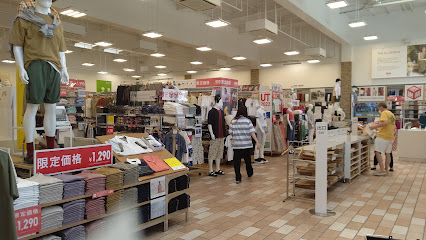
KASHIWA CAFE&COFFEEROASTERY | 珈茶話
Discover the rich flavors of artisanal coffee at Kashiwa Cafe & Coffee Roastery, a tranquil escape for coffee lovers in Nikko, Tochigi.

Nitori
Discover stylish and affordable home goods at Nitori in Nikko, a must-visit store for unique Japanese decor and furnishings.

Nikko Landmark
Experience shopping and dining at Nikko Landmark, a vibrant mall in Nikko, Tochigi, blending modern retail with cultural richness.

Essential bars & hidden hideouts
Hippari-Dako
Experience the heart of Japanese cuisine at Hippari-Dako, a cozy Syokudo and Teishoku restaurant in the enchanting city of Nikko.

Murmur Biiru Stand
Discover the charm of Murmur Biiru Stand in Nikko, a cozy bar with craft beers, quirky decor, and a welcoming atmosphere for all travelers.

Bar de Nikko
Experience contemporary Japanese flavors at Bar de Nikko, a modern izakaya restaurant in the scenic city of Nikko, Tochigi.

Sake Café Lab 250
Experience the best of Japanese sake and whiskey in a cozy café setting at Sake Café Lab 250, a hidden gem in Nikko, Tochigi.
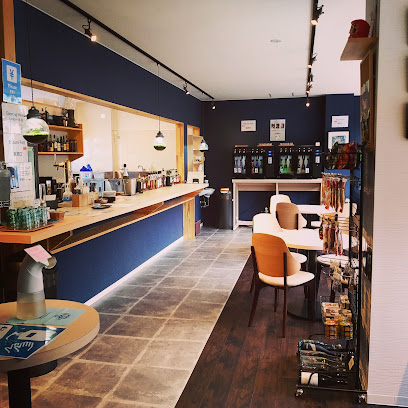
Wine Bar BLESS (Japanese wine only)
Experience the rich flavors of Japanese wines in a cozy bar setting at Wine Bar BLESS in Nikko.

Nikko Brewing
Experience the unique flavors of Tochigi craft beers at Nikko Brewing, a cozy bar offering a warm atmosphere and local snacks.

Shinkyo Inn Cafe Bar
Discover the enchanting Shinkyo Inn Cafe Bar in Nikko, offering a perfect blend of café delights and bar charm amidst stunning natural beauty.

るしあくらぶ
Discover the essence of Nikko's nightlife at るしあくらぶ, a lively pub offering local drinks and a warm, welcoming atmosphere for all travelers.

キャディー&ピエロ
Discover the authentic taste of Japan at キャディー&ピエロ, a lively izakaya in Nikko offering delicious cuisine and a vibrant atmosphere.
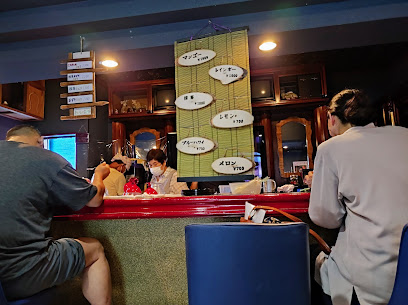
winebar OLIVE ワインバー オリーブ
Discover the exquisite charm of Winebar OLIVE in Nikko, where fine wines and a cozy atmosphere come together for an unforgettable experience.

Night Bar AHANa
Discover the lively atmosphere of Night Bar AHANa in Nikko, Tochigi, where great drinks and vibrant nightlife await.

あんず
Discover the charm of Japanese spirits at あんず, a cozy bar in Nikko offering a delightful selection of sake and shochu in a serene atmosphere.

hrát
Discover hrát, a cozy bar in Imaichi, Nikko, where locals and visitors unite over exceptional drinks and a vibrant atmosphere.
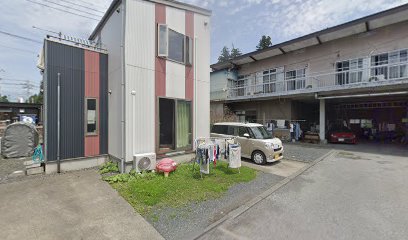
The Bar
Experience the elegance of The Bar at The Ritz-Carlton in Nikko, where luxurious drinks meet breathtaking views and serene ambiance.

ほろ酔い処みえ
Discover the charm of Japanese bar culture at ほろ酔い処みえ in Nikko, offering a warm ambiance and a diverse selection of local drinks.

Local Phrases about Nikko
-
- Helloこんにちは
[Konnichiwa] - Goodbyeさようなら
[Sayonara] - Yesはい
[Hai] - Noいいえ
[Īe] - Please/You're welcomeどうぞ
[Dōzo] - Thank youありがとうございます
[Arigatō gozaimasu] - Excuse me/Sorryすみません
[Sumimasen] - How are you?お元気ですか?
[Ogenki desu ka?] - Fine. And you?元気です。あなたは?
[Genki desu. Anata wa?] - Do you speak English?英語を話せますか?
[Eigo o hanasemasu ka?] - I don't understandわかりません
[Wakarimasen]
- Helloこんにちは
-
- I'd like to see the menu, pleaseメニューを見せてください
[Menyū o misete kudasai] - I don't eat meat肉は食べません
[Niku wa tabemasen] - Cheers!乾杯!
[Kanpai!] - I would like to pay, pleaseお会計をお願いします
[Okaikei o onegaishimasu]
- I'd like to see the menu, pleaseメニューを見せてください
-
- Help!助けて!
[Tasukete!] - Go away!行って!
[Itte!] - Call the Police!警察を呼んで!
[Keisatsu o yonde!] - Call a doctor!医者を呼んで!
[Isha o yonde!] - I'm lost道に迷いました
[Michi ni mayoimashita] - I'm ill具合が悪いです
[Guai ga warui desu]
- Help!助けて!
-
- I'd like to buy...買いたいです...
[Kaitai desu...] - I'm just looking見てるだけです
[Miteru dake desu] - How much is it?いくらですか?
[Ikura desu ka?] - That's too expensive高すぎます
[Takasugimasu] - Can you lower the price?値段を下げてもらえますか?
[Nedan o sagete moraemasu ka?]
- I'd like to buy...買いたいです...
-
- What time is it?今何時ですか?
[Ima nanji desu ka?] - It's one o'clock一時です
[Ichiji desu] - Half past (10)十時半
[Jūji han] - Morning朝
[Asa] - Afternoon午後
[Gogo] - Evening夕方
[Yūgata] - Yesterday昨日
[Kinō] - Today今日
[Kyō] - Tomorrow明日
[Ashita] - 1一
[Ichi] - 2二
[Ni] - 3三
[San] - 4四
[Yon] - 5五
[Go] - 6六
[Roku] - 7七
[Nana] - 8八
[Hachi] - 9九
[Kyū] - 10十
[Jū]
- What time is it?今何時ですか?
-
- Where's a/the...?...はどこですか?
[... wa doko desu ka?] - What's the address?住所は何ですか?
[Jūsho wa nan desu ka?] - Can you show me (on the map)?地図で見せてもらえますか?
[Chizu de misete moraemasu ka?] - When's the next (bus)?次のバスはいつですか?
[Tsugi no basu wa itsu desu ka?] - A ticket (to ....)チケット(...まで)
[Chiketto (... made)]
- Where's a/the...?...はどこですか?
History of Nikko
-
Nikko was founded in the 8th century by the Buddhist monk Shodo Shonin. In 766 AD, he established the first temple, known as Shihonryuji Temple, now part of the Rinnoji Temple complex. His efforts in promoting Buddhism led to the spiritual significance of Nikko, and it became a center for mountain worship.
-
Tosho-gu Shrine, dedicated to Tokugawa Ieyasu, the founder of the Tokugawa Shogunate, was constructed in 1617. The shrine is an architectural marvel, blending Shinto and Buddhist elements, and is famous for its intricate carvings, including the iconic 'Three Wise Monkeys' and the 'Sleeping Cat.' The elaborate design signifies the power and wealth of the Tokugawa regime.
-
During the Edo period (1603-1868), Nikko gained prominence as the Tokugawa Shogunate declared it a sacred site. The Tokugawa family invested heavily in the maintenance and expansion of the shrines and temples, ensuring that Nikko became a pilgrimage destination for those paying respects to Tokugawa Ieyasu.
-
The Meiji Restoration of 1868 marked a significant shift in Japan, as the country opened up to the West and modernized rapidly. In Nikko, this period saw the separation of Shinto and Buddhist practices under the Shinbutsu Bunri policy. Many temple lands were confiscated, and some structures were repurposed or destroyed, altering the religious landscape of the area.
-
In 1999, the 'Shrines and Temples of Nikko' were designated as a UNESCO World Heritage site. This recognition was due to their historical, cultural, and architectural significance. The listing includes 103 structures and buildings within the Tosho-gu, Rinnoji, and Futarasan Shrine complexes, ensuring their preservation for future generations.
-
Nikko is not only known for its historical sites but also for its natural beauty. The region is home to the stunning Kegon Falls, Lake Chuzenji, and the Oku-Nikko highlands. These natural wonders have been admired for centuries and are integral to the spiritual and cultural practices in the area, such as Shugendo, a form of mountain asceticism.
-
Nikko hosts several traditional festivals that reflect its rich cultural heritage. One of the most notable is the Nikko Toshogu Shrine Grand Festival, held in May and October, featuring grand processions of samurai warriors in traditional attire. These festivals offer a glimpse into the historical customs and communal spirit of Nikko.
Nikko Essentials
-
Nikko is located in Tochigi Prefecture, Japan, approximately 125 kilometers north of Tokyo. The most convenient way to get to Nikko is by train. From Tokyo, you can take the JR Tohoku Shinkansen to Utsunomiya Station, and then transfer to the JR Nikko Line to Nikko Station. Alternatively, you can take the Tobu Nikko Line from Asakusa Station in Tokyo directly to Tobu-Nikko Station. Both routes take about two hours.
-
Nikko has an efficient public transportation system, including buses and taxis. The Tobu bus service connects major tourist attractions, such as the Toshogu Shrine, Kegon Falls, and Lake Chuzenji. For those who prefer to drive, rental cars are available, but be mindful of mountain roads, especially in winter. Walking and cycling are also great ways to explore the central areas of Nikko.
-
The official currency in Japan is the Japanese Yen (JPY). Credit cards are widely accepted in hotels, larger restaurants, and shops, but it is advisable to carry some cash, especially when visiting smaller establishments or rural areas. ATMs are available, with 7-Eleven ATMs being particularly foreign-friendly, offering services in multiple languages.
-
Nikko is generally a very safe destination for tourists with low crime rates. However, it is always wise to take standard precautions. Keep an eye on your belongings in crowded places and avoid leaving valuables unattended. There are no specific high-crime areas targeting tourists in Nikko, but it is always best to stay vigilant and aware of your surroundings.
-
In case of emergency, dial 110 for police assistance and 119 for fire or medical emergencies. Nikko has local police stations and medical facilities that can provide assistance. It is recommended to have travel insurance that covers medical emergencies. Pharmacies are available for minor health issues, and many staff members speak basic English.
-
Fashion: Do dress modestly when visiting religious sites; avoid overly revealing clothing. Religion: Do show respect at shrines and temples. Remove your shoes when entering and be mindful of your behavior. Public Transport: Do be respectful and quiet. Don't talk loudly or use your phone on public transport. Greetings: Do greet people with a slight bow or a polite nod. Handshakes are less common but acceptable. Eating & Drinking: Do try local delicacies and accept food offerings graciously. Don't eat while walking; it is considered impolite.
-
To experience Nikko like a local, visit during the off-peak seasons to avoid large tourist crowds and enjoy a more peaceful atmosphere. Take a stroll through the less-visited areas such as the Kanmangafuchi Abyss for a serene experience. Engage with locals, as they are often friendly and willing to share insights about Nikko's history and culture. Don’t miss the seasonal local events and festivals for an authentic experience.
Trending Landmarks in Nikko
-
Nikkō Tōshogū
-
Kegon Waterfall
-
Tobu World Square
-
Shinkyō Bridge
-
Ryuzu Falls
-
Edo Wonderland Nikko Edomura
-
Yudaki Falls
-
Nikko Futarasan jinja Haiden
-
Nikko Kinugawa Hotel Mikazuki
-
日光金谷ホテル
-
Nikko Tamozawa Imperial Villa Memorial Park
-
Chūzen-ji Temple
-
Senjōgahara Grassy Plain.
-
Nikkozan Rin’nōji Temple
-
OSARU Land & Animal Town Nikko Saru Gundan
Nearby Cities to Nikko
-
Things To Do in Kanazawa
-
Things To Do in Nagoya
-
Things To Do in Kyoto
-
Things To Do in Nara
-
Things To Do in Osaka
-
Things To Do in Hiroshima
-
Things To Do in Sapporo
-
Things To Do in Fukuoka
-
Things To Do in Pohang
-
Things To Do in Gyeongju
-
Things To Do in Ulsan
-
Things To Do in Busan
-
Things To Do in Andong
-
Things To Do in Daegu
-
Things To Do in Chuncheon













